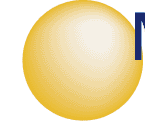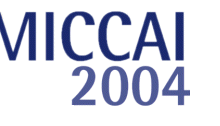 |
Scope
MICCAI is the premier international
conference with in-depth papers on medical image computing, computer-assisted
intervention and medical robotics. The multidisciplinary nature of these
emerging fields brings together clinicians, bioscientists, computer scientists,
engineers, physicists & other researchers who are contributing to,
and need to keep abreast of, advances in the methodology and applications.
Medical image computing techniques have a wide range of applications in
medicine and bioscience. The clinical applications span non-interventional
image interpretation and diagnostics, and a growing number of interventional
methods, from minimally invasive techniques to computer-aided and robotic
major surgery. Different types of image may require different types of
processing, and advances in image acquisition systems continuously open
up new possibilities for applications. All of these applications require
the manipulation and integration of medical image information. Many applications
depend on integration of the image information with sensor data (e.g.
from tracking systems), and/or effector control systems (e.g. robots or
positioning devices), and/or visual displays or other feedback systems.
The breadth and complexity of different image types and different applications,
and the wide range of scientific and clinical backgrounds of those involved,
have tended to encourage the development of numerous subgroups working
on individual applications. To some extent, this is appropriate, and there
is an obvious place for meetings focussed on a specific application. Nevertheless,
the applications all draw on a range of shared underlying medical image
computing and engineering techniques. Different terminology for the same
concepts and methods tends to be adopted by different groups working in
isolation. Communication becomes more difficult, unnecessary duplication
of effort follows, and cross-fertilisation between applications is reduced.
There is a strong need for the unifying forum provided by MICCAI, which
is complementary to meetings on specific applications. The wide range
of topics of relevance to MICCAI (see below) reflects this cross-disciplinary
approach.
Despite the fact that many underlying techniques are the same across different
applications, it cannot be too strongly emphasised that validation and
further development of techniques nearly always have to occur in the context
of specific applications. There are many examples in the literature of
a mathematical or scientific technique being presented as an advance without
any real clinical or bioscience justification or validation. There is
an inevitable tension between the discovery of a tool by a basic scientist
or mathematician, that they believe could be useful if applied in some
way (but may actually provide an unnecessarily complex or ineffective
approach to the practical problem), and the development of a solution
to a processing problem by an applications specialist (who may overlook
more powerful existing methods that are well understood). MICCAI acknowledges
this tension and seeks to bring together the strengths of both approaches.
The focus of MICCAI is thus on methodology for applications, with a strong
emphasis on validation within applications. One of the goals is to improve
communication between disciplines, to make state-of-the-art methodology
as accessible as possible to clinicians and bioscientists, and to help
basic scientists understand the detailed requirements in different clinical
and bioscience application areas. Understanding is seldom imparted by
short presentations and abstracts. The full-length peer reviewed papers
that characterise MICCAI are hard work for authors, reviewers and readers,
but they are worth the effort. The proceedings are important and completely
up-to-date reference works covering the state-of-the-art in the field.
The conference gives equal weight to posters
and oral presentations, which are assigned non-overlapping sessions to
ensure that all attendees have the opportunity to interact personally
with presenters.

Topics

History
The MICCAI conference series
was formed by the merger of CVRMed (Computer Vision, Virtual Reality and
Robotics in Medicine), MRCAS (Medical Robotics and Computer Assisted Surgery)
and VBC (Visualization in Biomedical Computing). The first MICCAI conference
was in 1998 in Cambridge, Massachusetts, USA.
Please visit the web site of the MICCAI International Society for more
information.

Previous Meetings
Information regarding the
past proceedings and papers from the previous meetings is here.
| Meeting |
Venue |
Chair |
Proceedings |
| MICCAI 2004 |
Rennes, France |
C. Barillot |
Springer
LNCS 3216 & 3217 |
| MICCAI 2003 |
Montreal, Canada |
T. Peters |
Springer
LNCS 2878 & 2879 |
| MICCAI 2002 |
Tokyo, Japan |
T. Dohi |
Springer
LNCS 2488 & 2489 |
| MICCAI 2001 |
Utrecht, Netherlands |
M. Viergever |
Springer
LNCS 2208 |
| MICCAI 2000 |
Pittsburgh, USA |
A. DiGioia |
Springer
LNCS 1935 |
| MICCAI 99 |
Cambridge, UK |
A. Colchester |
Springer
LNCS 1679 |
| MICCAI 98 |
Boston, USA |
R. Kikinis |
Springer
LNCS 1496 |
| CVRMed-MRCAS 97 |
Grenoble, France |
J. Troccaz |
Springer
LNCS 1205 |
| VBC 96 |
Hamburg, Germany |
K-H. Höhne |
Springer
LNCS 1131 |
| MRCAS 95 |
Baltimore, USA |
R. Taylor |
Wiley, Philadelphia, PA, USA |
| CVRMed 95 |
Nice, France |
N. Ayache |
Springer
LNCS 905 |
| MRCAS 94 |
Pittsburgh, USA |
T. Kanade |
Shadyside Hospital, Pittsburgh, PA, USA |
| VBC 94 |
Rochester, USA |
R. Robb |
SPIE 2359, Bellingham, WA, USA |
| VBC 92 |
Chapel Hill, USA |
S. Pizer |
SPIE 1808, Bellingham, WA, USA |
| VBC 90 |
Atlanta, USA |
M. Loew |
|
|







